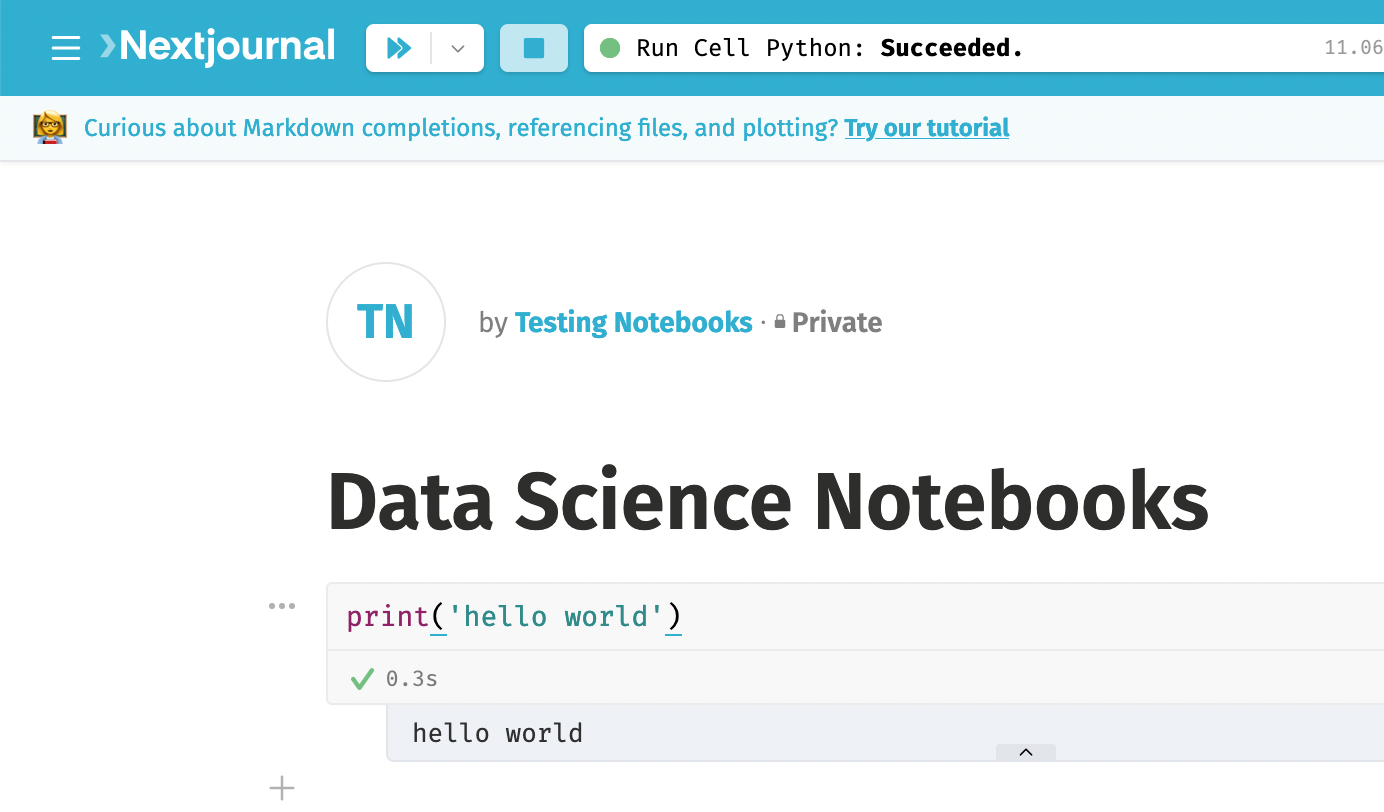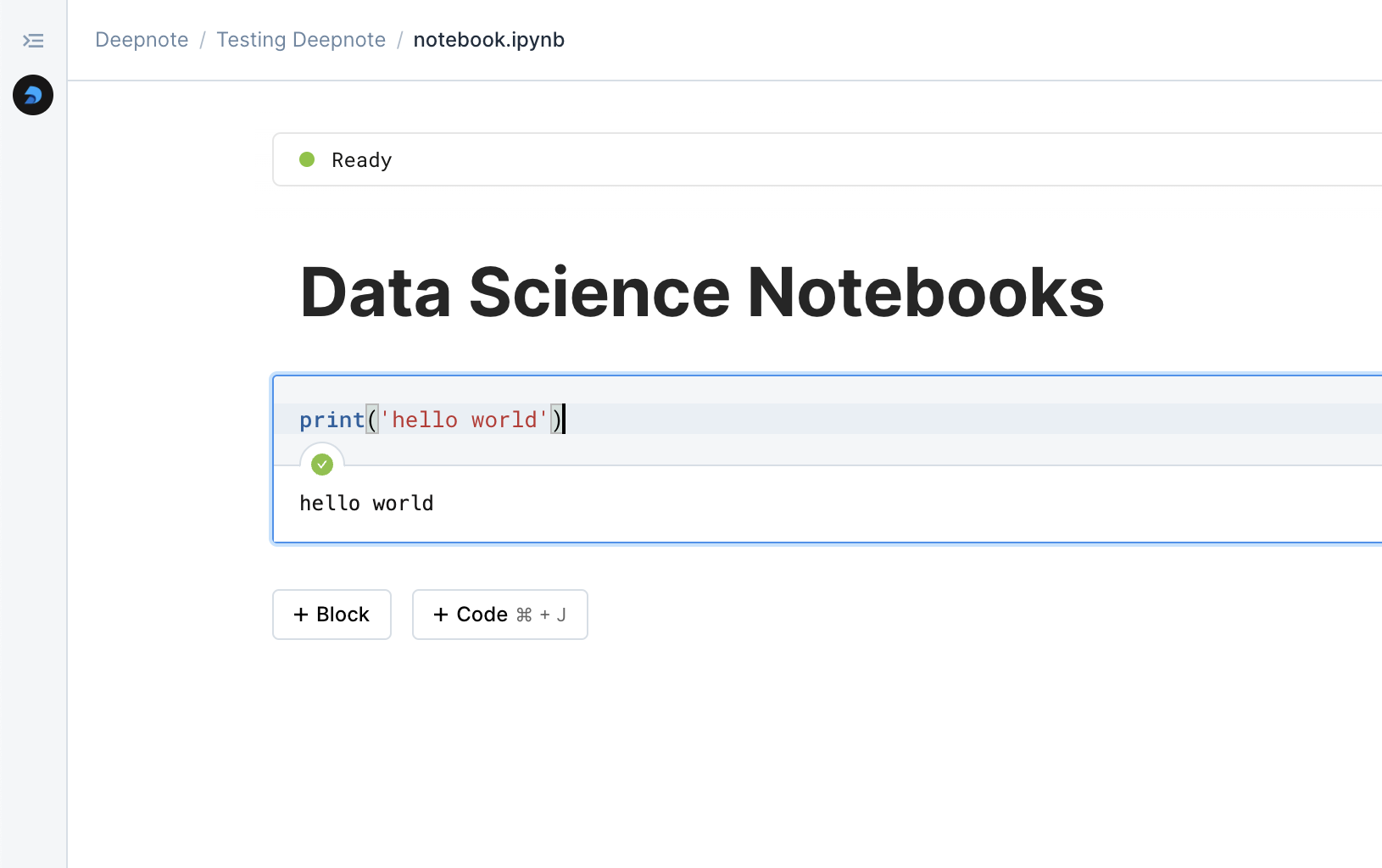

Nextjournal

Comparing two data science notebooks.






The landscape of collaborative computational platforms continues to evolve, with Nextjournal and Deepnote representing two modern approaches to scientific computing and data analysis. While both platforms aim to enhance reproducibility and collaboration in computational work, they each bring unique perspectives and capabilities to the table.
Nextjournal emphasizes reproducible research with its unique approach to computational environments and version control. The platform focuses on creating completely reproducible computational narratives, where every piece of code and its environment can be precisely recreated.
Deepnote takes a more comprehensive approach to collaborative data science, focusing on team workflows and seamless integration with modern data tools. The platform prioritizes real-time collaboration and accessibility while maintaining professional-grade features.
Nextjournal's approach to environment management is particularly distinctive. Each code block can run in its own isolated environment, allowing researchers to mix different programming languages and dependencies within a single document while maintaining perfect reproducibility. This granular control over computational environments sets it apart in the field of scientific computing.
Deepnote offers a more standardized approach to environment management, with custom Docker environments and environment variables that can be shared across team projects. The platform provides pre-built environments for common data science tasks while allowing teams to customize their setup as needed.
Nextjournal focuses on asynchronous collaboration through its version control system, which tracks changes to both content and computational environments. The platform's remixing feature allows users to build upon others' work while maintaining provenance.
Deepnote emphasizes real-time collaboration, enabling multiple team members to work simultaneously on the same notebook. The platform includes features like collaborative editing, commenting systems, and sophisticated permission management, making it particularly effective for team-based workflows.
Nextjournal provides robust support for data versioning and reproducibility, with each dataset tracked alongside the code that processes it. The platform focuses on ensuring that data analysis can be perfectly reproduced, even years later.
Deepnote offers extensive integration with modern data sources and tools, including:
Nextjournal's interface is designed around the concept of computational narratives, where each step in the analysis is documented and reproducible. The platform's unique approach to environment isolation allows for mixing different programming languages seamlessly within a single document.
Deepnote provides a more traditional notebook interface enhanced with modern features like AI-assisted coding, real-time collaboration, and integrated version control. The platform's focus on immediate feedback and interactive development makes it particularly suitable for exploratory data analysis.
Nextjournal implements version control at a fundamental level, tracking changes to both content and computational environments. This approach ensures complete reproducibility of research work.
Deepnote integrates with Git while providing its own version control system for notebooks, offering flexibility in how teams manage their code and analysis history.
Nextjournal particularly appeals to:
Deepnote is ideal for:
Nextjournal excels in scenarios where reproducibility is paramount. Its ability to preserve entire computational environments makes it invaluable for academic publishing and long-term research projects. The platform's remixing feature facilitates building upon existing research while maintaining proper attribution.
Deepnote shines in professional settings where teams need to collaborate on data analysis projects. Its integration capabilities and real-time collaboration features make it particularly effective for organizations working with diverse data sources and requiring quick iteration cycles.
The decision between Nextjournal and Deepnote should be guided by your primary needs:
Choose Nextjournal if:
Choose Deepnote if:
Both Nextjournal and Deepnote represent modern solutions to computational work, each with its strengths. Nextjournal's focus on reproducibility and environmental control makes it particularly valuable for research and academic work where the ability to recreate results exactly is crucial. Deepnote's emphasis on collaboration and integration with modern data tools makes it more suitable for professional data science teams working on contemporary business challenges.
The choice between these platforms ultimately depends on your specific needs regarding reproducibility, collaboration, and integration requirements. Both platforms continue to evolve, adding new features and capabilities to better serve their target audiences while maintaining their distinct approaches to computational work.
As the field of computational platforms continues to mature, both Nextjournal and Deepnote demonstrate how different approaches to similar problems can lead to valuable solutions for different user needs. Understanding these distinctions helps ensure you choose the platform that best aligns with your workflow and objectives.